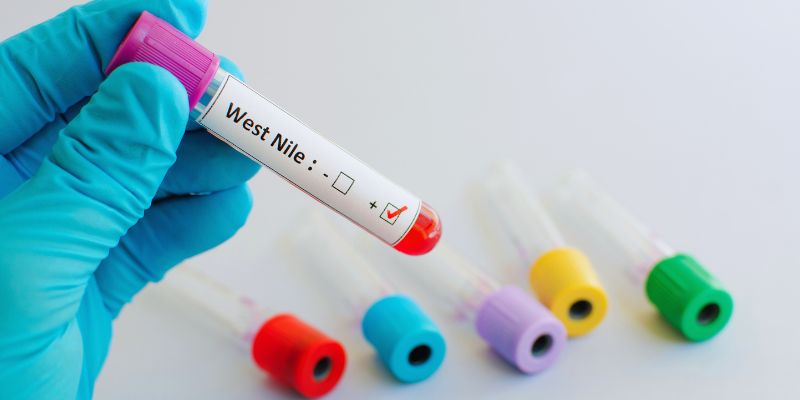Age-Related Macular Degeneration: Why Early Detection Matters for Vision
AMD, which mostly affects persons over 50, is a prominent cause of visual loss globally. The disorder progressively affects the macula, which controls center vision, making reading, driving, and facial recognition harder. AMD is common, but many individuals don't realize it until their eyesight is severely impaired. Successful AMD management requires early identification to halt its growth and preserve eyesight. Understanding eye health dangers, symptoms, and diagnosis empowers people to take preventative measures.

Learning About AMD
The central retinal macula is affected by AMD, a degenerative eye condition. This little but crucial structure provides acute, detailed vision for object recognition and daily duties. AMD causes blurred or distorted vision and central vision loss. AMD may be dry (atrophic) or moist (neovascular). Most instances of AMD are dry (80-90%). Eventually, macular cells break down, and drusen—yellow deposits beneath the retina that impair function—accumulate. Dry AMD may cause severe visual loss even if it advances slowly.
Though rare, wet AMD is more aggressive and causes more severe visual loss. Abnormal blood vessels form behind the retina, releasing fluid or blood and damaging macular cells quickly. Wet AMD may cause permanent blindness in months without treatment.
AMD risk factors
Many risk factors for age-related macular degeneration (AMD) are out of an individual's control, while others are lifestyle behaviors. Preventing and treating AMD requires understanding these risk factors, which impact its probability and development.
One of the biggest AMD risk factors is age. Each decade increases the risk of the illness significantly for anyone over 50. The retina becomes increasingly vulnerable to macular damage as it ages due to structural changes. AMD is becoming one of the primary causes of optical impairment globally as the population ages, stressing the need for awareness and prevention.
Genetics also affect AMD risk. A family history of the illness increases the likelihood of developing it. Genetic markers have been linked to AMD, indicating hereditary factors contribute to disease development. While genetic propensity cannot be modified, persons with a family history should have frequent eye exams to identify macular degeneration early.
As several studies have shown, smoking is another key cause of AMD. Smoking cessation is essential to eye health since it lowers AMD risk and development.
AMD risk increases with cardiovascular disorders such as high blood pressure and cholesterol. These circumstances reduce retinal blood flow, depriving it of nutrition and oxygen. Poor circulation may cause macular waste to accumulate, causing AMD. Medicating, eating well, and exercising may reduce these risks and improve eye health.
Recognition of Early AMD Symptoms
Routine eye tests are essential for the early identification of AMD, which may develop without symptoms. Before major vision changes, many people are unaware they have the illness. Specific visual abnormalities indicate the need for medical intervention as AMD advances.
Trouble with fine details is an early sign of AMD. Even with prescription glasses, reading tiny text or recognizing people may become harder. This slight visual clarity loss is an early symptom of macular impairment yet frequently missed. Simple eyesight skills like threading a needle or reading a menu in low light get harder with age.
Common symptoms include visual distortion. Door frames, grid patterns, and telephone poles might seem wavy or warped. This is caused by central vision macular damage. Colors may look duller, making commonplace items appear washed out. AMD patients often have trouble adapting to illumination changes, such as going from bright outside to dark inside.
Another AMD symptom is central vision darkening or blurring. Scotomas, minor interruptions, may make reading, cooking, and driving harder. AMD mostly affects central vision; therefore, peripheral vision usually stays intact, enabling people to maneuver but impairing fine detail. These blind spots might worsen with the illness, affecting independence and quality of life.
AMD symptoms may advance slowly, making it difficult to diagnose. Many people mistake their visual abnormalities for normal aging. The misperception typically delays diagnosis and treatment, which may damage long-term eyesight. Visual distortion or blurriness should be reported to a doctor immediately to optimize treatment success and reduce disease progression.
AMD diagnosis methods
Early AMD detection is best with regular eye examinations. Eye doctors employ many tests and imaging methods to diagnose and track the illness. Dilated eye exams are used to diagnose AMD. The eye doctor dilates the pupils with special drops to see the retina and macula. Drusen deposits and other AMD abnormalities are found throughout this procedure.
Advanced imaging for AMD diagnosis includes optical coherence tomography (OCT). Doctors may identify tiny macular structural changes before vision loss using this non-invasive scan's high-resolution cross-sectional retina pictures. OCT can detect fluid leaks behind the retina, making it beneficial for early wet AMD.
The Amsler grid test detects AMD-related visual abnormalities simply and effectively. Patients concentrate on a grid with a dot in the middle. If straight lines seem wavy or portions of the grid are absent, macular damage may be present. Occasionally, fluorescein angiography is done. This test highlights aberrant retinal blood vessels by infusing a specific dye into the circulation. It is very beneficial for identifying wet AMD and choosing a therapy.
Strategies for Treatment and Management
AMD has no cure, although numerous treatments may slow its development and preserve eyesight. Dry or moist AMD determines therapy. Lifestyle and nutritional adjustments help manage dry AMD. The Reseacrh found that high-dose antioxidant supplements such as vitamins C and E, copper, zinc, and lutein delay intermediate to advanced AMD. To identify symptom worsening, eye care professionals must check regularly.
Wet AMD demands more intensive treatment. This kind of AMD responds well to anti-VEGF treatments. These injections decrease eyesight loss by reducing aberrant blood vessel development and leaking. Multiple injections and periodic follow-ups are needed for anti-VEGF therapy.
Laser treatment may repair bleeding blood vessels and decrease macula damage. Laser treatments are less frequent now owing to anti-VEGF injections, but they may still be an option for some.

Prevention and Lifestyle Choices
Although AMD is not avoidable, a healthy lifestyle may dramatically lower the risk or halt its development. Quitting smoking is one of the best ways to safeguard your eyesight. Smoking is known to injure eyes, and quitting may significantly reduce AMD risk.
A nutrient-rich diet is vital for macular health. Leafy greens, citrus fruits, almonds, and fish give antioxidants and omega-3 fatty acids for eye health. Physical exercise and a healthy weight promote retinal blood circulation, further preventing AMD. Another protective method is shielding the eyes from UV light. UV-blocking sunglasses minimize retinal oxidative stress and AMD risk.
Conclusion
Progressive age-related macular degeneration may lower quality of life. There is no cure, but early discovery and treatment may slow development and preserve eyesight. AMD may be managed with regular eye examinations, lifestyle changes, and therapy.
Those at increased risk must be proactive about eye health. Individuals may enhance their eye health and results by identifying symptoms early, obtaining medical assistance, and adopting educated lifestyle choices. AMD education and awareness are essential to helping more individuals grasp early detection and safeguard their vision for years to come.












